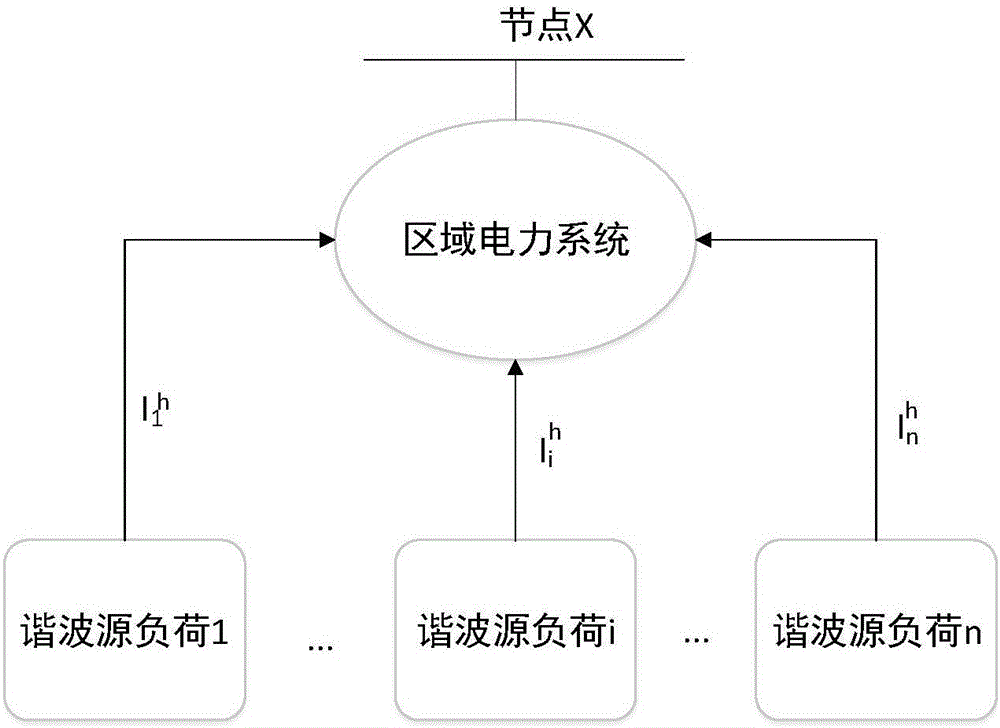Multi-harmonic-source harmonic contribution quantitative analysis method based on total-least square method
A least square method and multi-harmonic source technology, applied in the direction of measuring electricity, measuring devices, measuring electrical variables, etc., can solve problems such as failure to consider the existence of errors in independent variable harmonic currents, and achieve great practical engineering application value and results accurate effect
- Summary
- Abstract
- Description
- Claims
- Application Information
AI Technical Summary
Problems solved by technology
Method used
Image
Examples
Embodiment Construction
[0027] The present invention will be further described below in conjunction with the accompanying drawings and embodiments.
[0028] The invention proposes to apply the total least square method to the quantitative analysis of harmonic responsibility of multi-harmonic sources. The method takes into account the measurement errors of harmonic voltage and harmonic current during the measurement process. Compared with the least squares method, it can be seen that the logic of the method proposed in the present invention is more rigorous, and the evaluation accuracy is also improved. Finally, the superiority of the method is verified by IEEE 14-node simulation.
[0029] 1 Model building
[0030] Assuming that there are n harmonic source loads in the system at the same time, and node X is selected as the harmonic responsibility monitoring point, the harmonics generated at node X are generated by the joint action of n harmonic sources in the system, as shown in figure 1 Shown:
...
PUM
 Login to View More
Login to View More Abstract
Description
Claims
Application Information
 Login to View More
Login to View More - R&D Engineer
- R&D Manager
- IP Professional
- Industry Leading Data Capabilities
- Powerful AI technology
- Patent DNA Extraction
Browse by: Latest US Patents, China's latest patents, Technical Efficacy Thesaurus, Application Domain, Technology Topic, Popular Technical Reports.
© 2024 PatSnap. All rights reserved.Legal|Privacy policy|Modern Slavery Act Transparency Statement|Sitemap|About US| Contact US: help@patsnap.com










